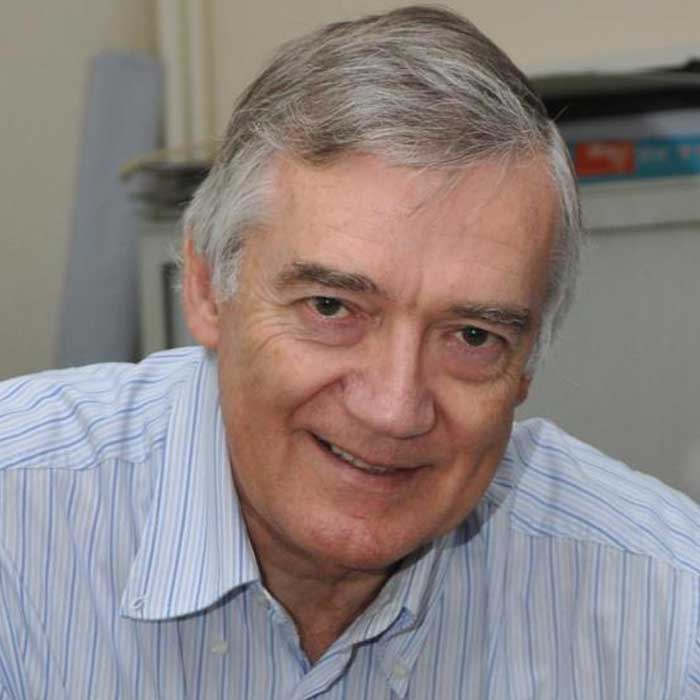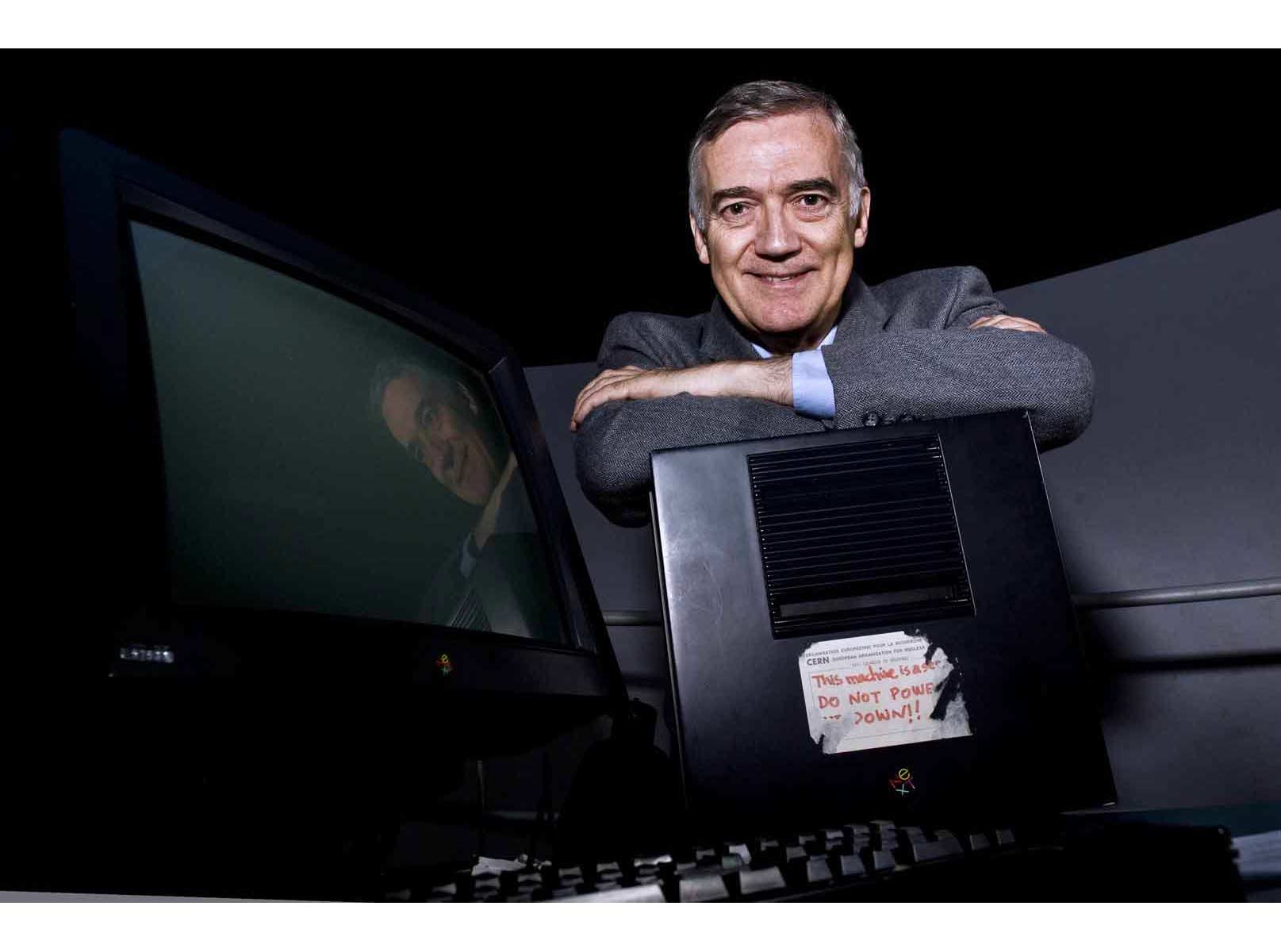
"When we have all data online it will be great for humanity. It is a prerequisite to solving many problems that humankind faces."
- Robert Cailliau
Robert Cailliau was Tim Berners-Lee’s first collaborator on the World Wide Web project. A tireless promoter of the web, Cailliau established the World Wide Web conference series, and was a member of the conference committee for many years.
Cailliau, most well known for the proposal, developed with Berners-Lee, became a key proponent of the project that led the way to the internet we see today.
Early Life
Robert Cailliau was born on January 26th, 1947, in Tongeren, Belgium. The first 11 years of Cailliau's life were spent in Tongeren, until his parents moved to Antwerp in 1958. After graduating from high school in 1964 Cailliau attended the University of Ghent at Flanders where he studied engineering. Cailliau preferred to stay at Antwerp, but at the time there was no university there.
After secondary school he graduated from Ghent University in 1969 as civil engineer in electrical and mechanical engineering (Flemish: Burgerlijk Werktuigkundig en Elektrotechnisch ingenieur).
After graduation, Cailliau remained at the university where he took a position at the Laboratory of Mechanical Engineering. While there he improved the data collection techniques within the laboratory and introduced many digital instruments that allowed results to be recorded and subsequently handled with a separate computer. At the time (late 1960s and early 1970s), total computerization of a laboratory of this nature was not a practical option.
Cailliau did want to introduce computers where possible and he went to the University of Michigan, Ann Arbor, to obtain a Masters degree in computer, information, and control engineering, which would allow him to apply computers to data recording. He graduated in 1971 with M.Sc degree in Computer, Information and Control Engineering.
Career
On returning to Belgium, Cailliau worked as assistant to Professor A. Van Cauwenberghe at the Laboratory of Control and Hybrid Computation where he helped develop software for the hybrid computer. It was during this time that Cailliau first visited CERN (European Organization for Nuclear Research), and after this visit he decided that he wished to work for the CERN project.
At this point, he suspended his career for a national service and Cailliau spent a year in the army where he wrote FORTRAN programs that simulated troop movements.
In 1974, Cailliau returned to his work and obtained a position at CERN. Initially employed on a fellowship, Cailliau worked in the Proton Synchrotron division on an improvement program for the control systems of the accelerator complex.
After his fellowship Cailliau was employed as a staff member, at which point he started working on document mark-up and formatting systems. In 1987 he became the group leader of Office Computing Systems in the Data Handling division. In 1989, due to restructuring within CERN, Cailliau moved to the Electronics and Computing for Physics division.
In 1990 Cailliau and Tim Berners-Lee proposed a hypertext system to allow easy access to CERN documentation. Cailliau was the first to convert to the web technology after Mike Sendall who originally let Berners-Lee start the project.
With Berners-Lee's knowledge of the internet, this eventually led to the World Wide Web (a name they came up with during this period). Prior to this Cailliau had been using Hypercard and all of the buildings at CERN were connected with Appletalk; it was his desire to see interdepartmental documentation that could be navigated around with hypertext that led to his innovative work.
In reality, this was a massive extension of the systems that Cailliau had introduced to CERN in 1973 and 1974. which had allowed the easy transfer of documents, code and files.

In 1992 Cailliau produced the first web browser for the Apple Macintosh, his favorite platform.
In 1993, Cailliau started "WISE", the first web-based project at the European Commission (DGXIII) together with the Fraunhofer Gesellschaft. Cailliau also started the authentication scheme for the web and supervised its implementation.
As a result of his work with CERN’s Legal Service, CERN released the web technology into the public domain on 30 April 1993. In December 1993 Cailliau called for the first International WWW Conference which was held at CERN in May 1994. The oversubscribed conference brought together 380 web pioneers and was a milestone in the development of the web.
Cailliau negotiating for internet access from a local university, and soldering up of the modem so that CERN could demonstrate the WWW at the Hypertext conference in San Antonio was a great illustration of his spirit. The conference led to the forming of the International World Wide Web Conference Committee which has organized an annual conference since then.
Cailliau was a member of the Committee from 1994 until 2002.
In 1994 Cailliau was one of the co-founders of the International WWW Conference Committee (IW3C2) after successfully organizing the first conference earlier that year. In 1995 Cailliau was awarded the Association for Computing Machinery (ACM) Software System Award for development of the World Wide Web.
This award was jointly awarded to Tim Berners-Lee, as well as to Marc Andreesen and Eric Bina, the latter two for their work on developing Mosaic (a forerunner of the Netscape browser).
During 1995, he was active in the transfer of the WWW development effort and the standards activities from CERN to the Web Consortium W3C. He then started, with the European Commission, the Web for Schools project, which has given support and access to 150 schools in the European Union.
At the start of the twenty-first century Cailliau was head of CERN's web office where his duties included looking after CERN's intranet and web presence. Although Cailliau works for the Swiss-based CERN project, he lives in France, which makes for interesting commuting.
He is a public speaker on the past and future of the World Wide Web and delivered the keynote opening speech at the annual Runtime Revolution developer conference in Edinburgh, Scotland on 1 September 2009. And now an active member of Newropeans, a transeuropean political movement for which he and Luca Cominassi have recently drafted a proposal concerning the European information society.
"Robert continued to speak on the subject of the web, promoting it, explaining it, and defending it, for many years, and still does, though he has retired from CERN and the conference committee. The early days of the web were very hand-to-mouth. So many things to do, such a delicate flame to keep alive. Without Robert's energy and passion for it I cannot imagine that it could have taken off as it did," praised Tim Berners-Lee.
Personal Life
Robert Cailliau has enjoyed his moments of career at CERN probably more than anything. As an informatics engineer and computer scientist, Cailliau has realized that CERN " has the right mix of academic freedom, entrepreneurial drive, and down-to-earthness that is the breeding ground for success."
And although his work involves around the internet that was a newly born phenomenon, he didn't feel that he was under pressure of working.
Cailliau suffers from the rare condition of synesthesia, a mismatch of the senses. In Cailliau's case, letters have colors. To describe it, he says that the word CERN is yellow, green, red, and brown. He finds this an amusing and sometimes useful condition, as it can work as a built-in spell check.
Cailliau is a fan of stereoscopic 3D (S-3D) photography. As a child he never owned a "Viewmaster", but he used those from some of his friends, making him familiar with the effect and also how it was done. In 2002, he started making some digital examples using prisms as viewer. He enjoys S-3D photography since it helps to make the experiences more memorable, although he stated that he never had enough time to enjoy his hobby.